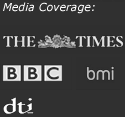Although there may be some similarities among these various kinds of intellectual property rights (IPR), they are different and serve different purposes.
Copyright
Is conferred automatically, on creation of a work and protects the actual form of the work rather than the idea or concept itself. You can mark your work with the copyright symbol (the letter "c" in a circle), but it is not compulsory. Material on the Internet is protected by copyright law in the same way as work in other media.
Unregistered Design Right
Is similar to Copyright, but is applied to a product rather than aesthetic creations such as literary, dramatic, musical and artistic works and computer programs.
These automatic rights are free to obtain for artistic works, but often difficult to enforce in the law courts because you must prove that the creation in question is covered by copyright, that you own it, and that the alleged infringer had access to and copied it rather than created their identical item independently. Design Registration proves that the form of the product is protected, that you own it, and it enables you to take action against anyone making, using or selling the design without permission, even if they had not ever seen or copied the design. This is a key difference between registered and unregistered design rights.
Patents
Are used for new and novel products or processes and are given on a regional basis. These require a formal application through the UK Patent Office. The invention must have had no prior public disclosure. Patents are concerned with how things work, what they do, how they do it, what they are made of or how they are made.
Trademarks
A trade mark can be any sign which distinguishes the goods or services of one undertaking from those of others. It can be a word or a picture. It can be a shape of a container.
There are two categories of trademark; registered - usually marked with a ® on the work - and unregistered - usually denoted by the letters TM. Trademarks have proprietary rights in that repeated use can count as ownership, established on first-to-use basis. It is easier to prove your ownership with a registered trademark.
Note that the information given above is just for your guidance. It's important to consult a professional before taking action that may jeopardise your IPR.



